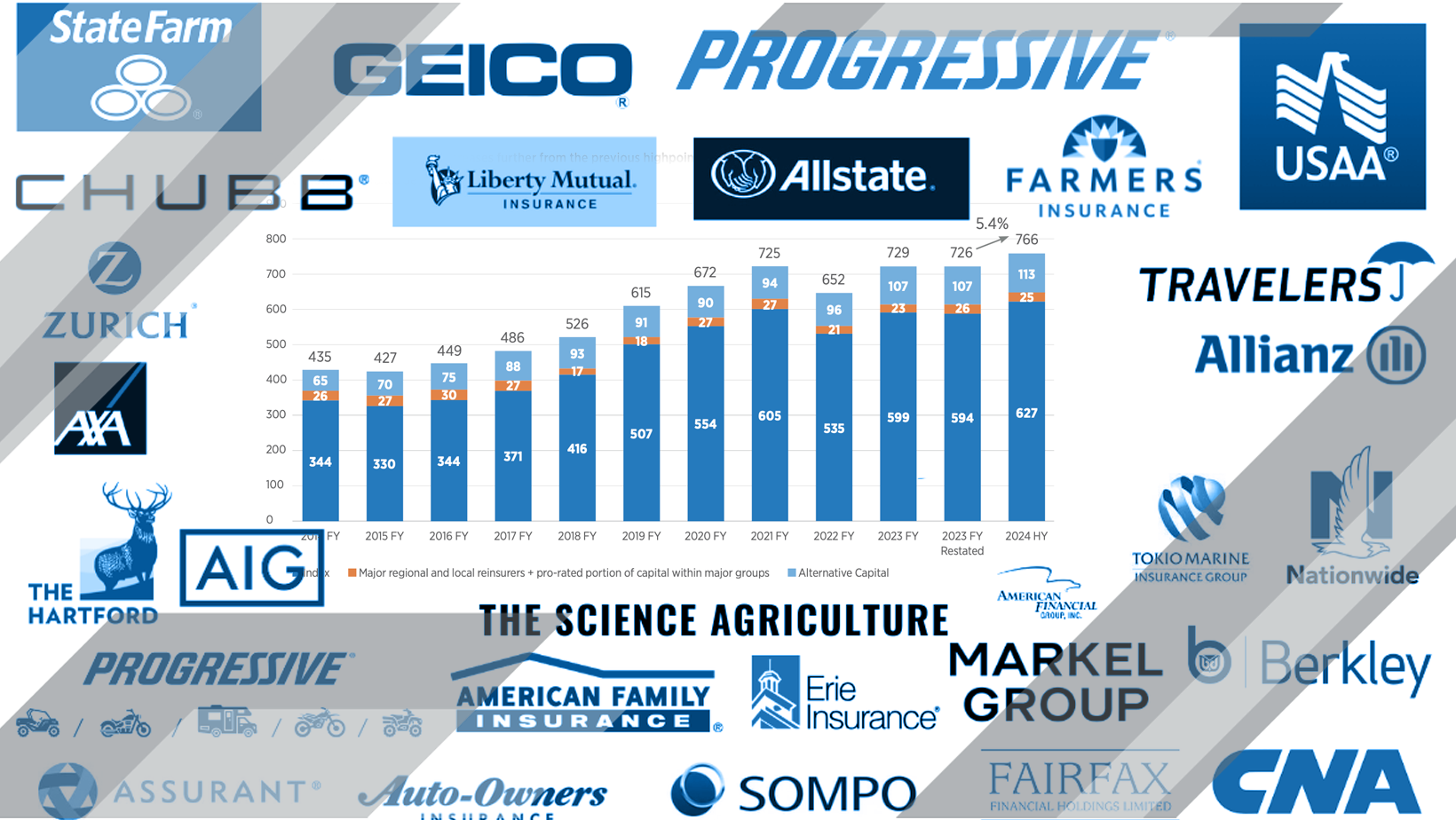Top Global Property/Casualty Insurers Show Strong Premium Growth

A booming premium year
The recent data from S&P Global Market Intelligence (S&P GMI) show a remarkably robust year for the global property/casualty (P/C) insurance sector. The top 50 global P/C insurers posted aggregate premium growth of 8.3 % in 2024. Even more striking: four insurers grew premiums by more than 20 %.
That kind of expansion stands out in a world where inflation, supply-chain pressures and natural-catastrophe exposures are all pushing costs higher and making rate adequacy harder.
Stand-out performers
Among the top performers, U.S.-based The Progressive Corporation jumped into the global top five, with a gross earned-premium increase of 20.5 % to more than US$72 billion—moving it ahead of both Lloyd’s of London and China’s People’s Insurance Co. (Group) Ltd. (PICC). Others with > 20 % growth included Bermuda-based RenaissanceRe Holdings Ltd. (which debuted on the top 50 list), Auto‑Owners Insurance Group and Arch Capital Group. Arch and Progressive also made strong showings on the U.S. performance rankings for underwriting and financial health.
Profitability and underwriting trends
The loss-ratio picture also improved: the average for the top 50 fell to 64.3 % in 2024 from 66.8 % in 2023, indicating underwriting is getting healthier. Yet differences remain sharp. For example:
-
State Farm Mutual Automobile Insurance Co. recorded a loss ratio of ~78.2 %, among the weaker large players.
-
By contrast, Progressive’s ~69.1 % places it in the mid-pack.
-
Some of the fastest-growing insurers posted notably strong underwriting metrics, boosting the overall trend.
Regional and structural dynamics
North America continues to dominate, with over half of the top 50 global P/C insurers headquartered there. Europe and Asia-Pacific also feature prominently. Almost all of the top 50—48 of them—posted year-on-year premium growth; only AIG and Nationwide saw declines, mostly because of divestitures and strategic pull-backs.
Methodology matters too. S&P GMI highlights that combining U.S. GAAP, statutory and IFRS insurers in one ranking presents real challenges because of how reserves and liabilities differ. The primary size measure is gross earned premiums or insurance service revenue, with gross or net premiums written used when necessary.
Key take-aways for the industry
For senior leaders in the P/C space, the story in 2024 is one of opportunity and caution. On one hand, the premium growth is solid and broad-based. On the other hand, the structural headwinds—rising claim costs, inflation in repair and rebuilding, evolving catastrophic exposures, reinsurance tightening—are far from resolved.
Here are some of the practical implications:
-
The growth is occurring in a hard market environment, which suggests pricing power remains but may be approaching a turning point.
-
Underwriting discipline is paying off: lower loss ratios are helping differentiate winners from laggards.
-
Geography and product mix matter: insurers with less exposure to loss-prone private-auto or homeowners business are widely outperforming.
-
M&A and strategic repositioning remain part of the story—high-growth entrants such as RenaissanceRe (via acquisition) are reshaping the leader-boards.
-
For those insurers not yet in the high-growth cohort, now may be the time to review distribution, underwriting segmentation, data analytics, and cost structure before softening conditions arrive.
“Diversity in product mix and a focus on disciplined underwriting served as common themes among the top performers.”
— Tim Zawacki, insurance sector strategist at S&P GMI
Table: Premium Growth and Loss Ratio Snapshot (Top 50 P/C Insurers, 2024)
| Metric | Value |
|---|---|
| Aggregate premium growth | ~ 8.3 % |
| Insurers with > 20 % growth | 4 carriers |
| Average loss ratio (top 50) | 64.3 % |
| Loss ratio in 2023 | 66.8 % |
In summary
2024 proved a strong year for the global P/C insurance industry, with healthy premium growth and improving underwriting results. But beneath the surface, the terrain is shifting: insurers must still tackle rising cost pressures, evolving risk mixes and competitive distribution dynamics. For leaders in the industry the question is no longer can you grow, but how you grow profitably and sustainably in what may soon turn into a more challenging cycle.
As we look ahead, the insurers that combine solid underwriting, thoughtful growth strategies, disciplined expense management and smart use of analytics will be best positioned to lead.

